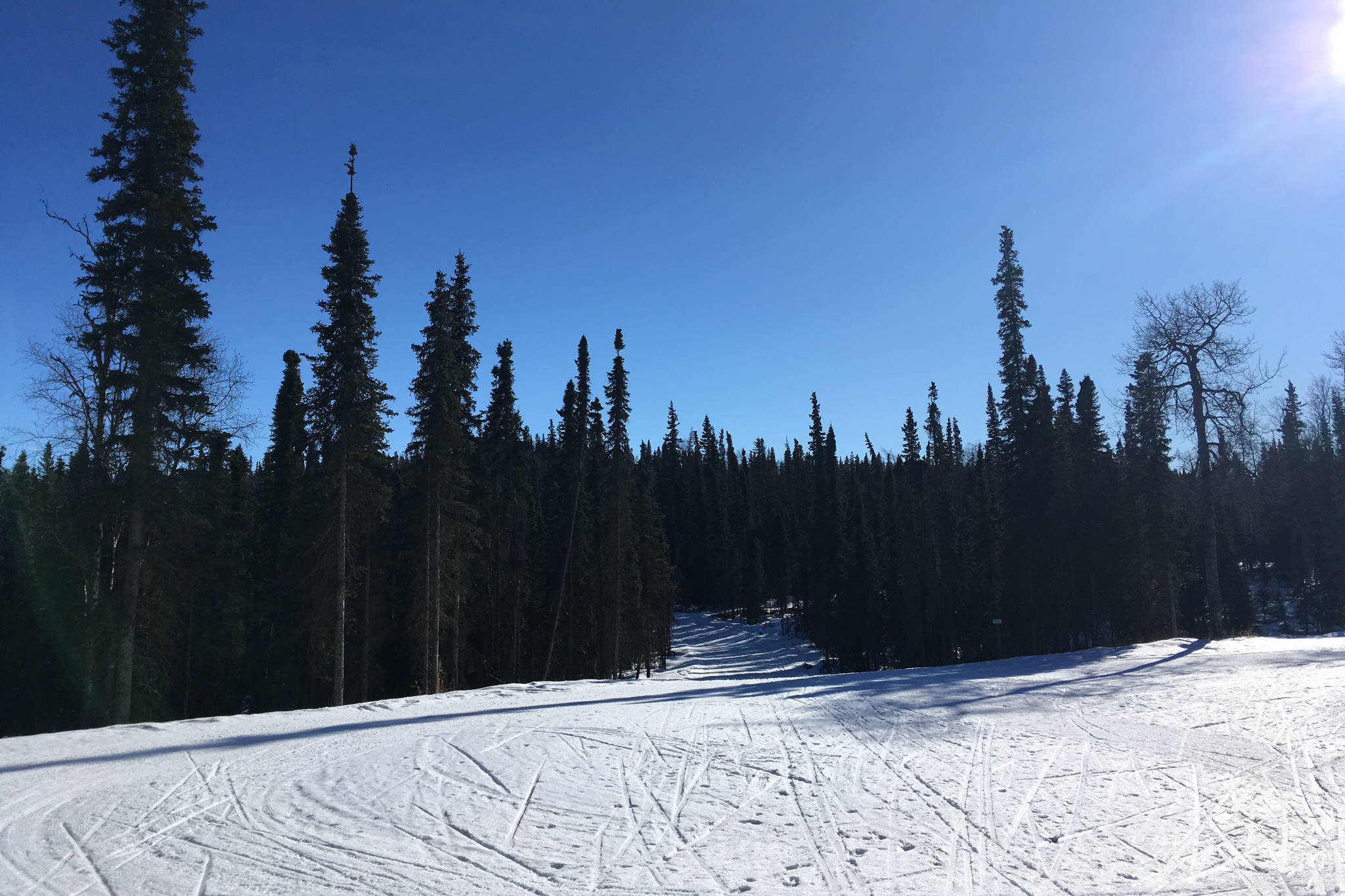By Bill Larned
I have an embarrassing recent personal anecdote I’d like to share, in hopes that it may save others embarrassment and pain.
To set the stage, last fall our son organized and ran in an endurance run with per-mile pledges to support the Boston Food Bank during the pandemic. As a supporter and board member of KDLL Radio, I was inspired by Bryan’s success and sense of community to try a similar thing here on the Kenai. This area and present conditions, however, lent themselves way more to skiing than running.
I printed and disseminated some announcements and handouts and picked last weekend to try skiing a combination of Tsalteshi Trails —adding up to about 40 kilometers.
Last Friday I got into my skis and started off from Skyview.
At that time, the trails were a mixture of soft wet snow in the sunny spots, and icy snow in the shady spots, all generously pocked with tracks of opportunistic moose.
I had spent many happy hours this winter skiing the trails and gaining experience and overconfidence. I found that in the shady/icy patches I was rarely in control of my trajectory, but somehow I managed to navigate about 18 kilometers without any wrecks.
It was dicey enough that I decided to skip the long steep “Bear” and “Goat” trails by driving to the K-Beach entrance to ski the gentler “Wolverine” and “Porcupine” trails.
Halfway through the Wolverine, I was gliding down a long gentle slope at a reasonable (I thought) speed. Then came the shady curve at the bottom, where the snow was smooth and icy, and no matter what I did, my skis were determined to go straight ahead.
At the last second, rather than flop down and take my lumps, I decided to ski straight into the deep snow on the trail edge for a softer landing.
What could possibly go wrong?
I found the answer when I hit the packed snow. My left ski jammed in, the other ski glanced off the snow, and I resembled a beer pretzel with a painfully twisted left ankle.
Somehow, I got my boots detached from the skis, to the relief of my throbbing ankle. I was assessing my ability to hobble or crawl out, when the only other skier I had seen appeared, saw my plight and pain and offered to tow me on skis back the mile or so to my car.
That plan sounded like a great opportunity for more ankle damage, so I declined and had him carry out my skis while I hobbled painfully back, using my poles for balance.
At the emergency room, the orthopedist took one look at my swollen ankle and said, “Oh yeah, it’s broken!” — which was confirmed by x-rays.
The lesson here is, especially if you are a senior, and therefore brittle where you were once flexible, if you are skiing and find conditions requiring creative nonstandard techniques to not end up in a snowbank, it’s probably time to revise your TTD list for the day.
In my case, I am now, with my swollen ankle propped up between a pillow and an ice pack, forced to bag my creative fundraising idea, and instead am reminding you to please give generously to show your very necessary support to keep our Public Radio station on the air for another year!
Call 283-8433 or donate online at KDLL.org. And thanks!
Bill Larned is a resident of Soldotna.

